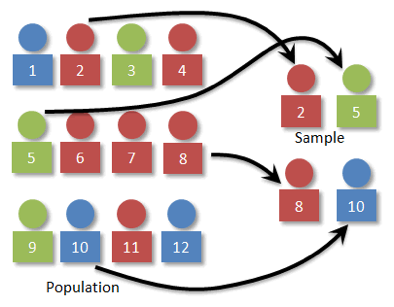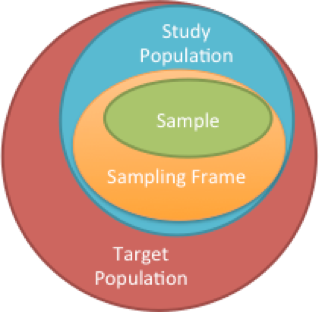GET IN TOUCH
- Please wait...

While working on my first professional market research proposal two years back, I had a very hard time designing the sampling process for that project. Once the proposal was finished after many hours of struggle, I was wondering what happened to all the learning from research projects and class lectures during my University days. It then occurred to me that just attending a few BBA/ MBA courses and some basic lectures on ‘Market Research’ wasn’t enough to deal with this stuff in the applied world. Over the years, I have talked to a number of subject matter experts and went through many materials on sampling to get a slight hold on this topic. My purpose is to share a few hacks that I have learned on the job and simplify the sampling process in this article (which is divided into 2 parts) for those who are interested in market research and frequently conduct surveys.

Figure: Sampling
Before we proceed, there are a few basic terms that need to be understood. Whenever we deal with sampling, we come across many concepts like population, sampling frame, census, and elements. Simply put, population refers to the collection of all the elements (e.g. individuals or places) of interest that a researcher wants to study in order to understand their traits/ behaviors. But in reality, it is not possible to study all the elements due to time constraints or cost limitations along with other resource restrictions. Hence we take a small representation from the population of interest for observation, better known as samples, to derive some traits or characteristics that help to generalize the entire population.
Sampling frame, another common term, is an organized list with relevant information about the individual elements of the population (preferably the entire population) from which the samples are drawn.
For any research project or study concerning a large population, not having a thorough sampling plan is like flirting with your chances. When the output of the research is of high significance or the entire future of an organization depends on your end result, you must make sure you have your sampling plan in order. Don’t forget, once you have collected the data for your research, there is no going back. So if you want to collect sound data from the field that will be a good representation of your study population, you need to design a solid sampling plan at the early stage of your research. For doing so, I would suggest approaching it with a structured mindset and considering the following 5 steps carefully.
This is a very important step as you need to lock in the population from which you will draw your samples later at an early stage of your research. The entire population that you want to study is known as the target population whereas the segment you have an access to from the target population is known as the study population. For example, if you want to conduct a study on the University students of Bangladesh (target population), you may

Figure: Population and Sample
consider university students only from the Dhaka district as your study population due to its’ accessibility.
Sometimes, it may happen that the population from which the samples are drawn is not the same population that we want to understand. They may be entirely separate, for example, we may study mosquitoes in order to get a better understanding of human health, or we might study records from people born in 2014 in order to make future predictions about people going to be born in 2015. Time spent in making the sampled population and population of concern precise is often well spent because it makes your research work much simpler and easy at the execution phase.
In the next article, I will explain the subsequent 4 steps to developing a good sampling plan and share some more examples as we move along.
Our experts can help you solve your unique challenges
Stay up-to-date with our Thought Leadership and Insights